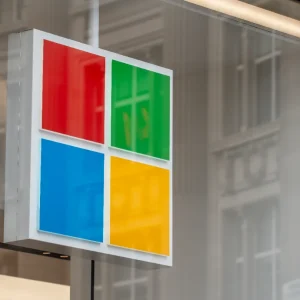
Over the next two years, three out of four IoT projects are expected to face schedule extensions of nearly 100% with the resulting cost overruns.
This is according to Gartner, who has identified the main ten IoT technologies for 2017 and 2018 that could potentially change that prediction.
CBR lists the technologies that made the analyst firm’s "Top 10 IoT Technologies for 2017 and 2018" report.
1. Security
With the IoT, new security issues have arisen and the scope for hackers has never been greater. This affects devices, platforms, operating systems, communications, and even the systems to which they are connected.
"Creating smarter products often removes traditional architectural barriers," according to Nick Jones, VP and distinguished analyst at Gartner that conducted the study.
The report says that security technologies to protect these devices and platforms from both information attacks and physical tampering, will be crucial. Companies will have to encrypt their communications and address challenges such as impersonating "things" or denial-of-sleep attacks that drain batteries.
In the report, analysts say that that security within the IoT environment is complicated as many devices and other connections use simple processors and OSs that may not support modern security approaches.
Gartner says that all roles involved in delivering IoT solutions, including chief information security officers (CISOs), architects, designers and programmers, must become familiar with IoT risks, security principles and technologies.
2. Analytics
The IoT is predicted to generate 403ZBs of data a year by 2018, up from 113.4ZBs in 2013, according to Cisco. All this data will be valuable to organisations and business models are expected to exploit the information collected for their benefit.
However, in the report it says that IoT demands new analytic approaches. "New analytic tools and algorithms are needed now, but as data volumes increase through 2021, the needs of the IoT may diverge further from traditional analytics."
IoT analytics therefore need new tools such as high-volume event stream platforms, the ability to operate on new data types, new technologies such as machine learning, and new architectures where analytics is distributed throughout the network of things.
3. Device (Thing) Management
Any organisation that is delivering large numbers of nontrivial connected ‘things will need a post-deployment control and/or management systems.
The report suggests the use of device monitoring tools, firmware and software updates, diagnostics, crash analysis and reporting, physical management, and security management.
Sophisticated management systems may be location- and network-aware — for example, only applying large software updates over low-cost high-speed networks such as Wi-Fi.
4. Low-Power, Short-Area IoT Networks
According to the study, in terms of unit shipments, low-power, short-range networks will dominate wireless IoT connectivity through 2025, far outnumbering connections using wide-area IoT networks.
Yet, the report says that low-power, short-range networks will coexist with a number of other network solutions, and businesses will have to opt for the one that best suits their needs balancing requirements such as range, battery life, bandwidth, density, endpoint cost and operational cost.
Current technologies offer over ten products in this field, including ZigBee, Bluetooth, Zwave/G.9959, Thread, Ant and Wi-Fi plus point-to-point systems on a range of industrial, scientific and medical (ISM) bands.
5. Low-Power, Wide-Area Networks
LPWA networks have been designed to be faster than conventional cellular networks and offer a larger territorial coverage.
A range of LPWA networking technologies have emerged to satisfy some of these needs; examples include Sigfox, Ingenu Random Phase Multiple Access (RPMA), LoRa, Long Term Evolution for machine-type communications (LTE-M), and more recently, a new cellular IoT standard, NarrowBand IoT (NB-IoT).
LPWA networks will be crucial for any organisation deploying low-bandwidth IoT devices over wide areas. Example applications include smart cities, utility meters, environmental monitoring, equipment tracking and telemetry.
6. Processors
The processors and architectures used by IoT devices define many of their capabilities, such as whether they are capable of strong security and encryption, power consumption, whether they are sophisticated enough to support an operating system, updatable firmware, and embedded device management agents.
Gartner predicts that low-end, 8-bit microcontrollers will dominate the IoT through 2019, "which implies that many IoT devices will be extremely simple and incapable of running an OS or performing sophisticated functions such as encryption unless built in as a hardware feature of the chip".
The company predicts shipments of 32-bit microcontrollers to overtake the 8-bit devices by 2020, and that 16-bit processors will never become dominant.
Choosing the right options for the business will require deep technical skills, the report says.
7. OS
From Intel to Microsoft, Samsung and Google, several IoT OSs have been launched in the last 12 months.
The minimal embedded IoT OSs are often very different from traditional platforms; many have event-driven programming models and some don’t support modern high-level programming languages and features like multithreading and dynamic memory allocation.
In the study it says that designers must understand the business trade-offs implied by OS selection. For example, a simple OS might imply less expensive hardware but more complex software development and could limit future upgradability.
Businesses also need to be cautious as embedded OS systems created by open-source projects are still relatively niche technologies, and skills and support may be scarce.
8. Event Stream Processing
As IoT data streams grow and the need for real-time analysis becomes critical, distributed stream computing platforms (DSCPs) have emerged to help deal with this.
They typically use parallel architectures to process very high-rate data streams to perform tasks such as real-time analytics and pattern identification. Examples include Apache Storm, Apache Spark, Google Cloud Dataflow and IBM InfoSphere Streams.
This will impact any organisation whose IoT applications create extremely high-rate data streams that must be processed in real time.
9. Platforms
Just like with IoT OSs, over the last year several IoT platforms have been launched to help developers and designers create their smart products and services.
According to the report, the services provided by such platforms fall into three main categories: low-level device control and operations such as communications, device monitoring and management, security, firmware updates; IoT data acquisition, transformation and management; and IoT application development.
Organisations developing complex IoT systems should consider such platforms to jump-start projects because they deliver a wide range of necessary features.
However, the study cautions that this is a very immature market and considerable technical and commercial volatility is to be expected. All such products are very proprietary, and migration from one to another is not simple.
10. Standards and Ecosystems
Gartner highlights that standards and ecosystems are not precisely technologies, however, "most eventually materialize as APIs called by IoT systems".
In the report is says that standards will be essential for the IoT ecosystem in order to allow devices to communicate and interoperate.
As for ecosystems, analysts say that many will emerge, and commercial and technical battles between these ecosystems will dominate areas such as the smart home, the smart city and healthcare.
The company says that there are too many IoT "standards," and in many cases, the concerns and technologies of these groups overlap or compete. Examples of active groups include the AllSeen Alliance, the OpenFog Consortium, the Thread Group, and the Open Interconnect Consortium.






